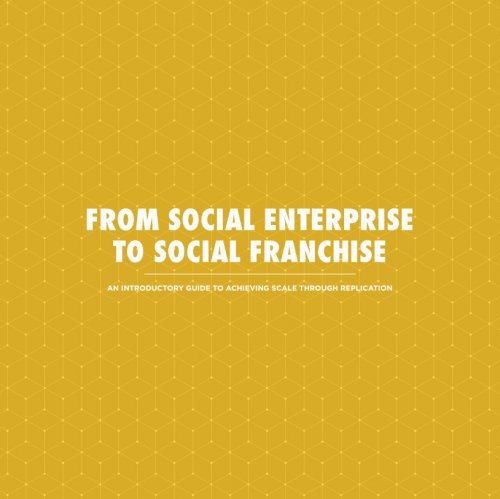In recent years, the social enterprise sector has gained momentum in communities across the country, representing a sizable segment of the Canadian economy. People all over Canada are realizing the importance of taking action on issues ranging from local food systems, to community finance, to accessibility and social equity, all with social and environmental impact as a driving force behind this solutions-based movement.
A signpost of the maturing and evolving nature of this sector is the tendency for social enterprises to look to scale their successful models to new territories outside of their core market, or across impact areas. Social franchising is one of several methods that social enterprises, nonprofits, and charities are experimenting with to scale their models within Canada and abroad, as a way to quickly reach new beneficiaries, achieve larger impact, and leverage efficiencies of scale, without having to “reinvent the wheel”.
Download From Social Enterprise To Social Franchise
While this guide focuses specifically on social franchising it is important to consider whether replication is truly the best approach for an organization, and if the organization is willing to assume the responsibilities that a social franchising strategy entails.
From Social Enterprise to Socail Franchise will introduce Canadian social enterprises to the concept of social franchising by first taking a look at how social franchises compare and differ from traditional models of commercial franchising and then by exploring some of the inherent benefits and challenges of this approach.
Table of Contents
| Part One: Introduction | |
| 1.1. What is Social Franchising? | |
| 1.2. (Commercial) Franchising Defined | |
| 1.3. Commercial vs Social Franchising | |
| Part Two: Replication Strategies | |
| 2.1. Scaling Up or Scaling Out? | |
| 2.2. Replication Options: An Overview | |
| 2.3. Key Replicable Elements | |
| Part Three: Social Franchising Lessons | |
| 3.1. Launching a Social Franchise | |
| 3.2. Benefits & Challenges of Social Franchising | |
| 3.3. Case Studies Profiles | |
| Conclusions | |
| References | |
| Appendix One: Social Replication Readiness Test | |
| Appendix Two: Further Reading | |





